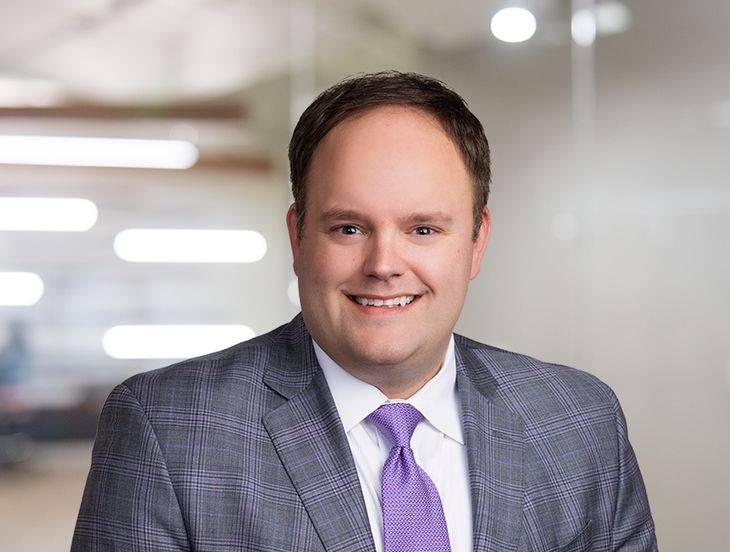Labor Board Highlights Priorities for the New Year: 5 Key Takeaways for Employers
Insights
11.22.23
Many employers had trouble keeping up with the dizzying pace of new directives from the National Labor Relations Board (NLRB) in 2023. And these changes may have prompted you to review and update your employee relations policies and practices with an eye for compliance in the year ahead. What might you expect from the NLRB in 2024? Board members and General Counsel Jennifer Abruzzo recently discussed their priorities at the American Bar Association’s 17th Annual Labor and Employment Law Conference in Seattle. Here are five top priorities they highlighted, as well as our practical tips for your compliance plan.
1. Spotlight on Work Rules
Board members emphasized their continued focus on work rules – including employee handbooks and workplace conduct policies – and ensuring they are narrowly tailored.
As you may know, in August the Board modified the legal standards used to evaluate such rules. Under the decision in Stericycle, Inc., the Board analyzes whether an employee “would reasonably construe” the applicable rule or policy as chilling protected conduct under Section 7 of the National Labor Relations Act. To avoid a violation, employers must now show that workplace conduct rules are narrowly tailored to special circumstances justifying any infringement on employee rights.
Board Member David Prouty noted that the NLRB will look at such policies through the lens of the employee who wants to keep their job and also wants to exercise their Section 7 rights.
However, the Board’s sole Republican member, Marvin Kaplan, said it’s hard for employers to understand how a work rule meets the “narrowly tailored” standard.
The new standard subjectively examines whether a workplace rule or policy has a reasonable tendency to interfere with employees’ exercise of Section 7 rights. In other words, if an employee could reasonably interpret the rule to be coercive (even if a noncoercive interpretation is also reasonable), then the burden shifts to the employer to justify it.
| Practical Tips: While some employers already review their handbooks on a yearly basis, it may be important to do so more frequently in light of the Stericycle ruling – particularly since so called “workplace civility rules” requiring employees to positively engage with co-workers are likely to be deemed unlawful. You should consider working with your attorney to audit your employment policies for compliance with the new standard and ensure you are up to speed on its real-world impact on existing workplace conduct rules. |
2. Limitations on Non-Competes
While GC Abruzzo said she doesn’t necessarily think non-compete agreements should be unenforceable in every situation, she feels very strongly that they should be limited. “My position is pretty clear,” she told attendees at the ABA conference, noting that she wants to see bargaining power equalized between employers and employees. She said the NLRB is seeing non-competes with low- and middle-wage earners in retail and the fast-food industry who are prevented from improving working conditions because they can’t threaten to leave and get a job with a competitor.
In a memo issued on May 30, GC Abruzzo urged NLRB regional directors to find that many employer-mandated non-compete agreements infringe on employees’ rights under Section 7. While General Counsel memos don’t represent the official legal position of the entire agency, they do represent the policy and guidance for all Regional Offices investigating and prosecuting charges against employers.
| Practical Tips: Even if your organization hasn’t had prior dealings with the NLRB, your choice to continue using non-compete agreements could very well come under scrutiny — and you should be prepared for the possibility that employees will file unfair labor practice charges against you. Consider taking inventory of all existing non-compete agreements in your organization, assessing which employees are being asked to sign such agreements, and working with legal counsel to understand the associated risks and to potentially update your policies and practices. |
3. Planning for AI Advancements
“AI is something that we’re all going to have to grapple with,” GC Abruzzo noted at the conference. This issue has been top of mind for a while and will continue to be a focus for many federal agencies. Back in October 2022, GC Abruzzo issued a memo saying that agency investigators should target workplace surveillance and “algorithmic management” technologies that have a “tendency” to interfere with employees’ protected workplace activity. “Recent technological advances have dramatically expanded employers’ ability to monitor and manage employees within the workplace and beyond,” she said.
The memo asserts that increased reliance on sophisticated technological tools to monitor employee activities on the heels of the pandemic have the practical effect of chilling union and other protected concerted activities, and that AI-driven software could use data obtained from such surveillance to make automated decisions that discourage those activities.
| Practical Tips: You may want to review your existing surveillance and monitoring initiatives to ensure they are sufficiently tailored to conform to your underlying business objectives. You should take steps to articulate and document the legitimate reasons for such initiatives prior to implementing them or as you continue to administer them. Where feasible, you should consider confining the scope of such provisions to employee working time and explore other prospects for narrowly tailoring application around their unique business objectives. You should also train supervisors to administer such practices in compliance with existing NLRB doctrine. Lastly, unionized and non-union employers alike should tread cautiously when implementing new monitoring technologies and programs in close consultation with legal counsel. |
4. Responding to Union Recognition Demands
The Board’s August 25 decision in Cemex Construction Materials Pacific, LLC created a new framework for determining when employers are required to bargain with unions without a representation election. The decision was yet another step taken by the Board to reverse the decline in union membership and make it easier for unions to add new members. In a follow-up move, GC Abruzzo issued a guidance memo on November 2 that provides some further structure to this new framework and imposes heavy burdens on employers faced with bargaining orders in response to unfair labor practice charges.
| Practical Tips: It is more important than ever for employers to be proactive. Click here for an eight-step action plan to strengthen your employee relations program. |
5. Sharing Information
Employers should prepare for increased enforcement efforts now that the NLRB has entered partnerships with several other federal agencies. For example, the NLRB and the Occupational Safety and Health Administration announced on October 31 that they entered an agreement to enhance information sharing and cross-agency consultations, training, outreach, and education. The agencies aim to promote safe and healthy workplaces and protect workers who speak out about unsafe working conditions. This agreement aligns with other recent interagency collaborations we’ve seen from the NLRB — including two earlier partnerships with the Department of Labor and the Federal Trade Commission. This means employers may find themselves subject to even more scrutiny from multiple agencies.
GC Abruzzo said she doesn’t have plans to partner with any additional agencies at this time, but she’s open to it.
| Practical Tips: Ensuring you have solid pay practices, worker classification systems, and safety and health programs in place may ultimately save your workplace from the concerted enforcement efforts the NLRB and partners such as OSHA, the DOL, and the FTC. |
Conclusion
We will continue to monitor NLRB and other agency decisions that impact your day-to-day operations and provide updates as necessary. Be sure to sign up for Fisher Phillips’ Insight System to ensure you receive updates directly to your inbox. If you have questions, contact your Fisher Phillips attorney, the authors of this Insight, or any attorney in our Labor Relations Practice Group.
Related People
-
- Steven M. Bernstein
- Regional Managing Partner and Labor Relations Group Co-Chair
-
- Todd A. Lyon
- Partner
-
- Joshua D. Nadreau
- Regional Managing Partner and Vice Chair, Labor Relations Group


